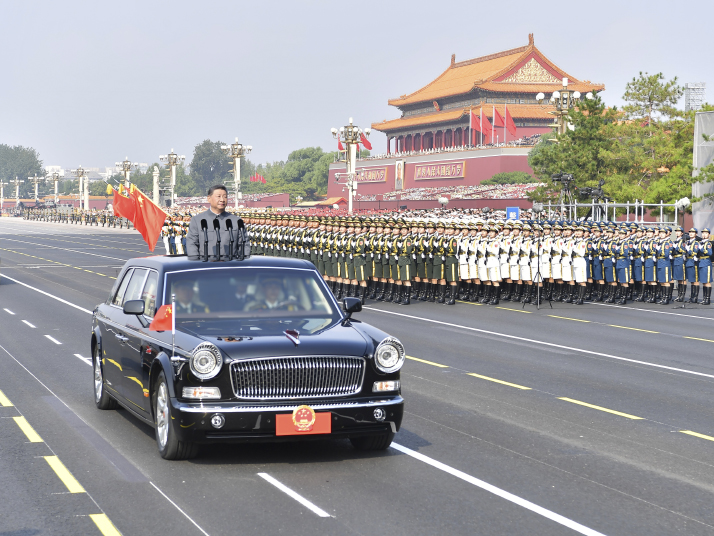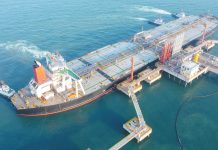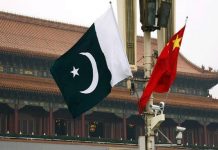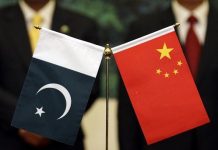
A grand Victory Day military parade was held in Beijing on September 3 to commemorate the 80th anniversary of the victory in the Chinese People’s War of Resistance Against Japanese Aggression and the World Anti-Fascist War.
Eighty years after the victory, the world, however, still confronts daunting challenges. “Today, humanity again has to choose between peace and war, dialogue and confrontation, win-win cooperation and zero-sum game,” President
Xi Jinping said in his address before reviewing troops on that day.
He called on nations to “uphold common security, eradicate the root cause of war and prevent the recurrence of historical tragedies.”
Upholding justice and safeguarding peace have become pressing imperatives for global governance. A core message sent by the V-Day parade is a declaration to the people of China and the world: China has never forgotten the lessons of history, and it treasures the peace so dearly won, and stands ready to work with all peace-loving nations to safeguard justice and stability.
“The Chinese people firmly stand on the right side of history and the progress of human civilization. We will remain committed to the path of peaceful
development, and join hands with all peoples around the world in building a community with a shared future for humanity,” Xi said.

Resisting aggression
At the V-Day parade held in Beijing a decade ago, 300 veterans of the war of resistance against Japanese aggression (1931-45) took part in the parade in vehicles. This year, fewer than 100 veterans are still with us, with an average age of 99. Six representatives sat on the Tiananmen Rostrum, joining President Xi and leaders from 26 countries to watch the ceremony. As President Xi, Russian President Vladimir Putin, the top leader of the Democratic People’s Republic of Korea Kim Jong Un, and other dignitaries took turns greeting the veterans, a crowd of 50,000 in Tiananmen Square broke into thunderous applause, paying tribute to the heroes.

More than 80 years ago, these heroes fought against Japanese invaders, along with other valiant people, to save the nation and its people.
“The Chinese People’s War of Resistance Against Japanese Aggression was an important part of the World Anti-Fascist War. With huge national sacrifice, the Chinese people made major contributions to saving human civilization and safeguarding world peace,” President Xi said in his V-Day speech.
At the cost of over 35 million lives, the Chinese people won the final victory. For China, it marked the first complete triumph over foreign invasion since the Opium War of 1840.
The forces led by the Communist Party of China (CPC) fought tenaciously during the war of resistance against Japanese aggression. Under the CPC’s leadership, anti-Japanese forces fought more than 125,000 battles, annihilating over 1.7 million Japanese invaders and their puppet troops in China, according to an editorial recently published in newspaper People’s Daily. They established 19 anti-Japanese democratic base areas and liberated a population of roughly 100 million. By the closing stages of the war, they were confronting nearly 60 percent of the invading Japanese forces and 95 percent of the puppet troops.
Promoting peaceful development
China is committed to peaceful development and uses its development to contribute to world peace and development.
In the past decades, China has fought a battle against poverty and backwardness. Today, the country stands as the world’s second largest economy and the world’s largest manufacturing powerhouse. It has held the leading position in manufacturing for 15 straight years.
Whereas during the 14-year war of resistance against Japanese aggression, the disparity in overall national strength between China and Japan was staggering. According to historical records, in 1937, when Japan launched its full-scale war of aggression against China, its annual industrial output totaled $6 billion, compared with China’s $1.36 billion. China’s per-capita GDP was barely one 20th of Japan’s. That same year, Japan produced 5.8 million tons of steel, while China managed only 40,000 tons. Japan’s military spending was roughly 10 times greater than China’s, and it turned out 1,580 aircraft, 744 pieces of heavy artillery, and warships with a combined displacement of 52,400 tons. China, by contrast, had almost no heavy industry at all—its numbers were virtually nil.
Now amid global uncertainty, China has emerged as a key stabilizing force in driving economic development, wrote Song Wei, a professor with the School of International Relations and Diplomacy, Beijing Foreign Studies University in an article in Beijing-based newspaper Global Times. Song said that in recent years, China has contributed about 30 percent of annual global growth, making it the largest engine of the world economy. Despite sharp shifts in global dynamics over the past year, China’s economy has demonstrated resilience and adaptability under pressure. In the first half of 2025, China’s GDP grew by 5.3 percent year on year, underscoring its continued role as a major driver of global growth.
Developing a force of deterrence
The V-Day military parade, attended by more than 10,000 soldiers, over 100 aircraft and hundreds of ground armaments, demonstrated the transformation of the armed forces from a backward army into a modern military. It showcased the new structure of services and arms of the People’s Liberation Army—an outcome of the recent military reform. Troops from the four services, namely, the Army, the Navy, the Air Force and the Rocket Force, as well as the four arms, including the Aerospace Force, the Cyberspace Force, the Information Support Force and the Joint Logistics Support Force, marched past Tiananmen Square.
Advanced armaments were put on display, including unmanned intelligence and counter-unmanned equipment, hypersonic missiles, directed-energy weapons and electronic jamming systems.
At a press conference days prior to the parade, Wu Zeke, Deputy Director of the Parade Leadership Group Office and a senior officer of the Joint Staff Department of the Central Military Commission, explained that all the weapons and equipment on display were drawn from domestically produced, active-service main battle systems, with many making their first public appearance.
Despite showcasing its advanced weaponry, China maintains that military power is built to deter conflict, not to wage it.
According to Sun Tzu’s The Art of War, the supreme art of war is to subdue the enemy without fighting. At its core, it holds that strong deterrence or the limited use of force can curb conflict and secure peace.
Today, the Chinese people enjoy a peaceful life. One telling detail from the parade drew wide attention. While covering the event live, Alobaidi Ameen, a reporter with China Arab TV, headquartered in Dubai—and an Iraqi who rose to online fame in China for his fluent standard Chinese—was seen shedding tears on camera. He said that having endured two wars as a child, he knows all too well the value of peace, and he longs for the people of the Middle East to enjoy the same peaceful life as the Chinese.
But between 1840 and 1945, the reality was starkly different. For more than a century, China’s territory was repeatedly invaded by multiple countries, culminating with Japanese aggression, leaving behind a trail of atrocities too numerous to record—inflicting immense suffering on the Chinese people. These included the Nanjing Massacre, in which over 300,000 lives were brutally taken, and the use of bacteriological and chemical warfare in blatant violation of international law. Such horrors etched deep scars in China’s historical memory, and the belief that backwardness left it vulnerable to attack became ingrained across generations. Many came to see that the surest way to preserve peace is for a peace-loving nation to maintain armed strength sufficient to deter any would-be aggressor.
Lasting peace is not secured through goodwill grounded in endless concessions, but through the strength that makes would-be aggressors think twice. A peace-loving nation draws its greatest power not from its teeth or attack, but from the defense and deterrence that compel any provocateur to reckon with the consequences.

China values military strength but does not idolize force; it strives for national and military strength, yet rejects the logic that power inevitably leads to hegemony; it stands against unjust wars, yet does not fear wars imposed upon it. The Chinese people hold fast to the profound truth that justice will prevail, and to the historical law that a just cause commands broad support, while injustice can never triumph.
“Might may rule the moment, but right prevails forever. Justice, light and progress will inevitably triumph over evil, darkness, and regression. At all times, we must advocate the common values of humanity, resolutely defend international fairness and justice, and ensure righteousness prevails and brightness shines in our world,” Xi said at the reception commemorating the 80th anniversary of the victory after the military parade.
From the Five Principles of Peaceful Coexistence to the contemporary vision of building a community with a shared future for humanity, China has, in the more than 70 years since the founding of the People’s Republic, never initiated a war or conflict, nor seized an inch of foreign land. It remains the only major power to have written peaceful development into both its Constitution and the Constitution of its ruling party, elevating it to the status of national will—and the only nuclear power to commit to a no-first-use policy for nuclear weapons.

A flag-guarding air echelon attends the military parade. Three helicopters flew by with banners that respectively read “justice prevails,” “peace prevails” and “the people prevail”。(XINHUA)
United for peace
Representatives of people who had supported China during its war of resistance against Japanese aggression were invited to come view the parade in person. In his V-Day speech, Xi expressed gratitude to the foreign governments and international friends that supported China during the war.
Today, China has helped other countries to keep peace. China is the largest contributor of troops and a key player in United Nations peacekeeping operations among the UN Security Council permanent members. So far, it has deployed over 5,000 peacekeepers and maintaining a standing force of 8,000 personnel ready for UN missions. It is also the second-largest contributor to the UN peacekeeping budget.
On September 3, Chinese soldiers who have participated in UN peacekeeping operations made their first appearance in a V-Day parade.
China has remained steadfast in upholding the purposes and principles of the UN Charter. In the past 35 years, Chinese peacekeepers have carried out missions in over 20 countries and regions, with 17 officers and soldiers laying down their lives. Over the past 15 years, the hospital ship Peace Ark has sailed across three oceans and six continents, delivering medical care to more than 370,000 people.
These actions speak to China’s pledge to the world: China’s development is not a threat, but a growing source of peace; its growing strength will bring greater positive energy to the cause of peace and development.
As the parade drew to a close, 80,000 pigeons soared into the sky above Tiananmen Square—an emblem not only of the glory of victory, but of a solemn pledge of peace. –The Daily Mail-Beijing Review news exchange item





